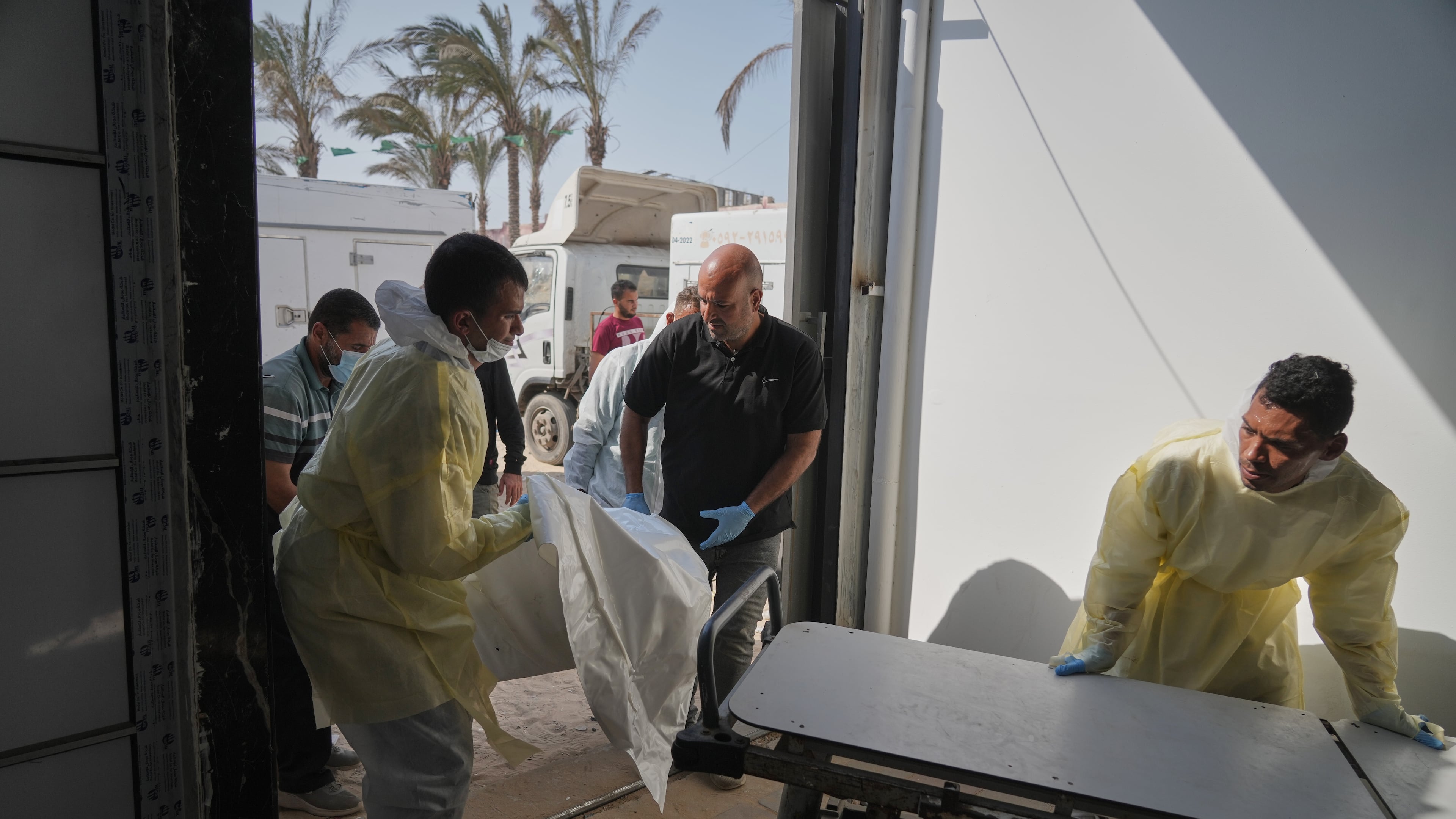Israel returns bodies of 15 Palestinians to Gaza as exchanges outlined in fragile ceasefire proceed

DEIR AL-BALAH, Gaza Strip (AP) — Officials at Gaza’s largest functioning hospital said Wednesday that the bodies of 15 more Palestinians were returned from Israel, as exchanges outlined in last month’s fragile ceasefire went ahead despite allegations of violations.
The International Committee of the Red Cross has transported 285 bodies held in Israeli custody to Gaza since last month's agreement was brokered, though health officials in Gaza have said identifying the remains is complicated by a lack of DNA testing kits.
Israel has not disclosed how many bodies it is holding or where they were recovered, but has been returning 15 each time the remains of an Israeli hostage are returned from Gaza.
The 15 were returned to Nasser Hospital in Khan Younis on Wednesday, a day after Palestinian militants in Gaza handed over the body of Itay Chen, an Israeli soldier killed in the Oct. 7, 2023, attack that started the war.
His family mourned after being notified of Chen's return, which they called bittersweet, and demanded further inquiry into how the attack was able to happen, according to a statement from Israel's Hostages and Missing Families Forum.
The exchanges are the central component of the initial phase of the U.S.-brokered agreement which requires Hamas return all hostage remains as quickly as possible. The exchanges have gone ahead even as Israel and Hamas have accused each other of breaching other terms of the deal.
Hamas returned 20 living hostages to Israel on Oct. 13. The group has since also returned the remains of 21 bodies. Israeli officials have decried parts of the process as a violation of the agreement, accusing Hamas of handing over partial remains in some instances and staging the discovery of bodies in others.
It has pushed to speed up the returns and in certain cases has said the remains were not those of hostages.
Hamas has said recovering bodies is complicated by the widespread devastation in the coastal enclave and has returned one to three bodies every few days. It has accused Israel of opening fire at civilians and restricting the flow of humanitarian aid into the territory. The number of casualties has dropped since the ceasefire took effect.
But health officials in Gaza — who do not distinguish between civilians and militants — have continued to report deaths from strikes, while Israel has said that soldiers have also been killed.
The deal will not move to subsequent phases until all the remains of Israeli hostages are returned.
The next parts of the 20-point plan call for creating an international stabilization force. Its makeup hasn’t been finalized, but diplomats are working to define its role, persuade Arab countries to take part, and win wider international support.
“What we believe is that whatever entity that is created in Gaza should have the legitimacy of a mandate from the Security Council,” U.N. Secretary-General Antonio Guterres told reporters in Doha on Tuesday.
The fragile agreement aims to wind down the war that was triggered by the Hamas-led attack on southern Israel that killed about 1,200 people and saw 251 taken hostage.
Israel responded with a sweeping military offensive that has killed more than 68,800 Palestinians in Gaza, according to Gaza’s Health Ministry. The ministry, part of the Hamas-run government and staffed by medical professionals, maintains detailed records viewed as generally reliable by independent experts.
Israel, which has denied accusations by a U.N. commission of inquiry and others of committing genocide in Gaza, has disputed the ministry’s figures without providing a contradicting toll.
___
Metz reported from Rabat, Morocco.
